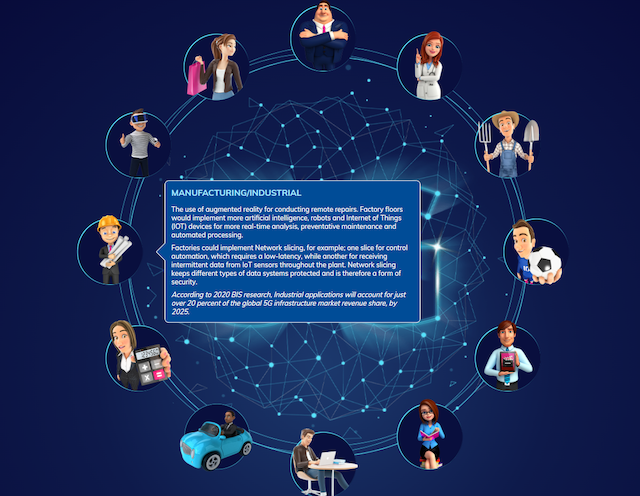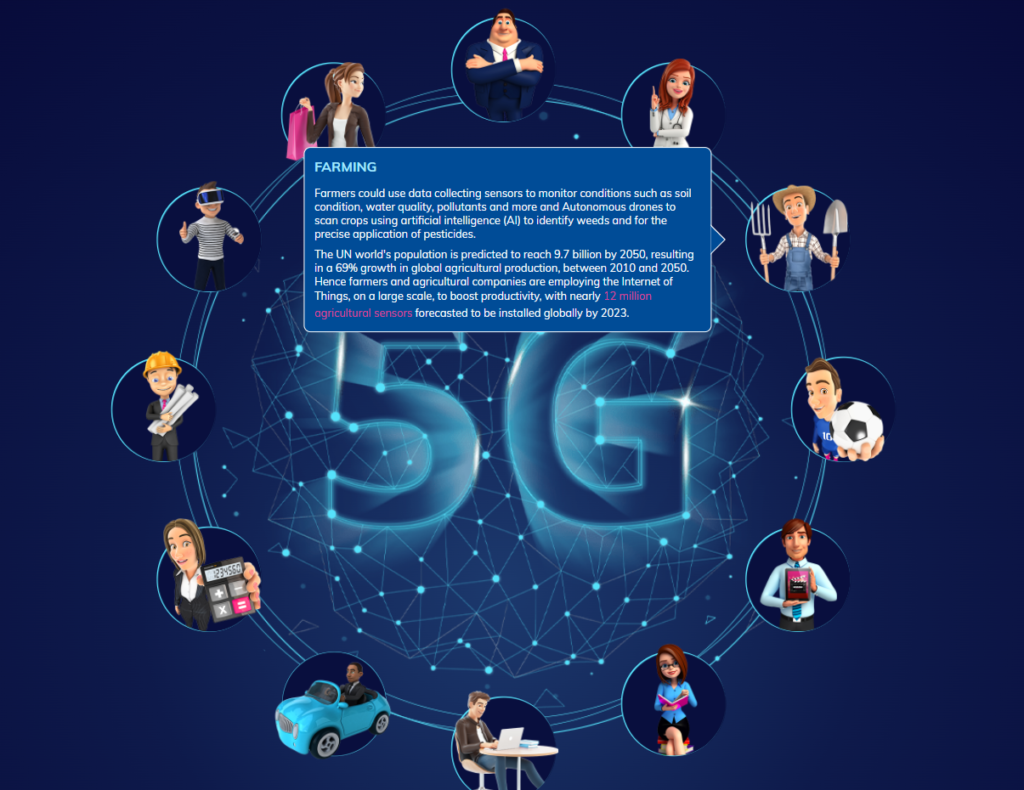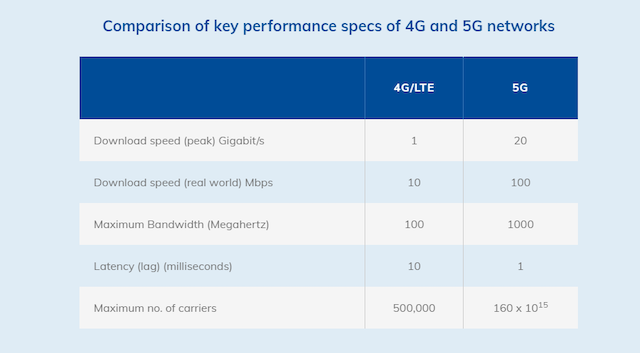Every generational jump in wireless network technology opens new possibilities that did not exist before that generation. We have come from the first generation that enabled calling to the fifth generation that is capable of much more than people thought just a few years ago. These capabilities are enabled by faster internet speeds, higher bandwidth, and low latency connections. The fifth generation of wireless network technology, 5G, has applications that extend far beyond calling and accessing the internet. 5G is seeing applications in numerous industries, and it is these applications we will be discussing in this article.

Courtesy graphic
Healthcare
The need for information to reach medical professionals as fast as possible and for healthcare workers to have the latest information on their patients is paramount. In case of emergencies, 5G is making it easier for medical professionals to receive near-instantaneous alerts should there be a medical emergency with one of their patients. Wearable devices that make this possible ensure people get the help they require fast.
The faster speeds and higher bandwidth that come with 5G also make it possible for medical professionals to share patient information quickly. This happens regardless of how large the files are because the network can transmit more data per unit time than 4G networks.
The low latency afforded by 5G also means remote treatment is possible. Such remote treatment is not only possible through telemedicine, which has been available through 4G technology, but also through robotics. Robots can receive commands in real-time no matter where a doctor or surgeon is, breaking down barriers to healthcare and necessary surgeries.
According to research done by melitabusiness.com, the use of 5G for real-time patient monitoring will add $123 billion to the global GDP by 2030, while the use of remote treatment will add $89.8 billion.
Retail
5G is set to change customer experiences in the retail sector. With 5G enabling augmented and virtual reality shopping, customers will be able to shop in virtual stores and add items to virtual carts. All of this then gets billed to their credit card without the customers leaving their homes.
For the fashion retail industry, shoppers will be able to try different iterations of different fashion items to see how they look on them. Additionally, businesses can use these same systems to gauge interest and customer interactions and send real-time offers if they seem unlikely to add the item to their cart.
This is estimated to improve customer experiences and satisfaction while adding $12 billion to the retail industry annually by 2030.
 Manufacturing
Manufacturing
The manufacturing industry, where robotics and connections between different machines play a huge role, is set to be impacted the most by the introduction of and advancements in 5G technology. The manufacturing sector falls squarely within this description. With the connection of different equipment within manufacturing facilities, manufacturing companies can improve their operations and make their processes more flexible.
These connections will allow the automation of processes so companies can react quickly to changes in demand and thus changes to their manufacturing processes without any human interventions. Doing so will reduce costs and remove inefficiencies.
Predictive maintenance will also become one of the aspects of manufacturing impacted by 5G. Companies can know when each machine needs maintenance using AI, Internet-of-Things, and 5G. They will not have to wait for them to break down to do the necessary servicing, which will help control maintenance costs and reduce the impact of unexpected breakdowns. Such breakdowns can have an impact on whole supply chains, and this is why preventing them through predictive maintenance is so important.
 Agriculture
Agriculture
Data will be a significant player in agriculture in the foreseeable future. Farmers will rely more on data than chemicals to ensure optimum agricultural production. Farmers are already using sensors in their fields to see which areas need water, pest management, or disease management.
In livestock farming, the use of wearables will make it easier to connect many IoT devices to make monitoring livestock health easier. With all the data they collect and with proper management, farmers can reduce the use of antibiotics and other chemicals while keeping their livestock healthy and production up, all without compromising the food supply.

Courtesy graphic
The Automotive Industry
Apart from the manufacturing industry, the automotive is perhaps the industry that will be the most impacted by 5G. Players in the automotive industry are already implementing 5G in their self-driving vehicles. Using this connectivity, they can update and upgrade these cars, so they are running the latest software, making them safer and improving their functionality.
Additionally, Vehicle-to-Everything communication will become huge as the 5G rollout continues. Vehicle-to-Everything communication allows self-driving vehicles to communicate with everything around them, including other cars, traffic signals, and cyclists. Doing so will make for safer roads while reducing many of the bottlenecks caused by humans that lead to traffic congestion.
Some companies are already experimenting with platooning. Platooning is an arrangement where self-driving trucks follow a driver-driven truck, communicating with it using 5G. Doing so helps reduce fuel consumption, pollution, and is also proving to provide safety benefits as well.
5G is already being used for communication in mobile and computing devices. Different industries are taking advantage of it to improve efficiency, reduce costs, make the world safer, reduce pollution, and a lot more. With the 5G roll-out still ongoing, it is reasonable to conclude that there is a lot more 5G can do; we just have not had the opportunity to explore all the possibilities.








Recent Comments